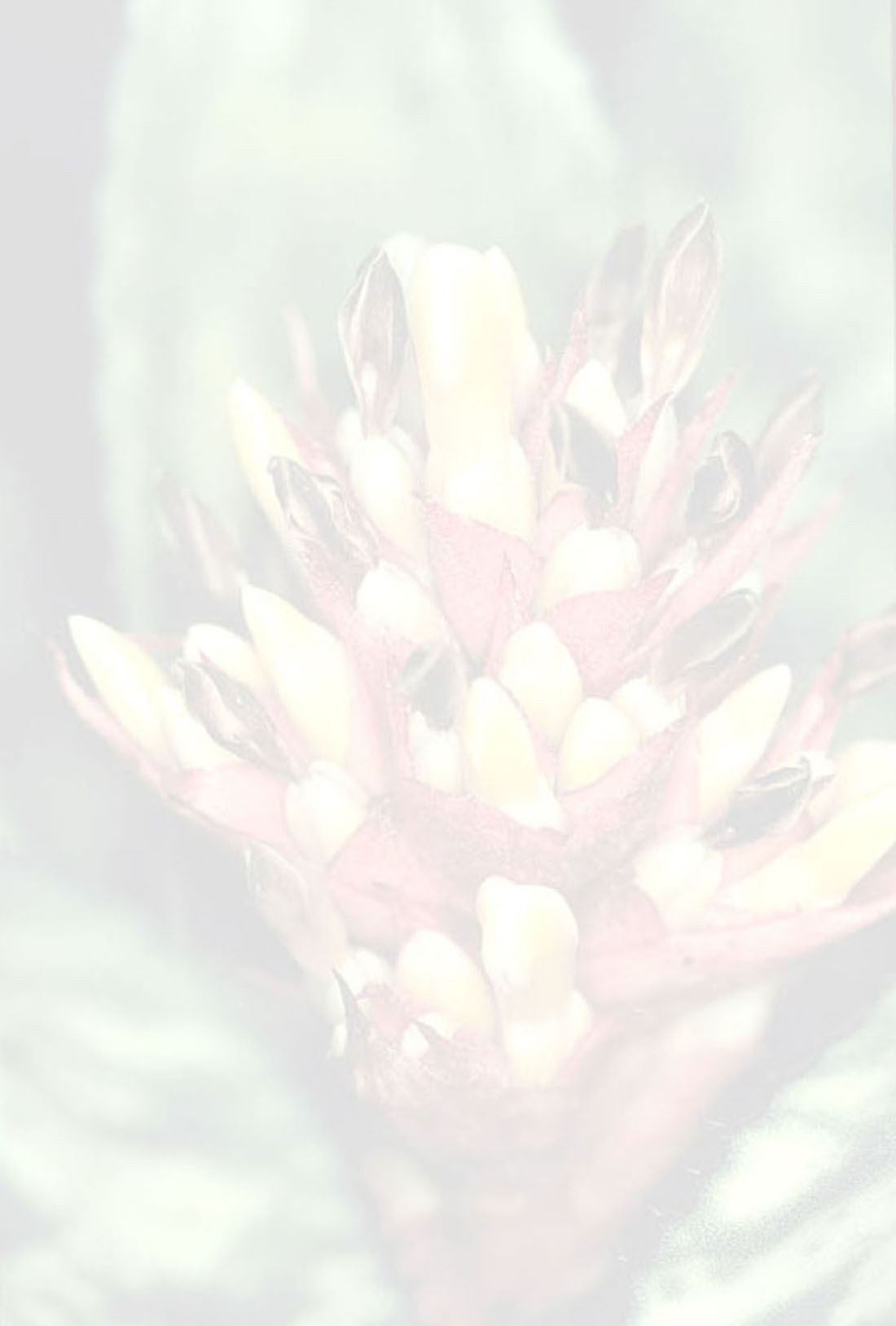Aechmea dealbata E.Morren ex Baker
Literature references:
*move your mouse pointer over the page numbers to see comment
Comments:
- Aechmea dealbata belongs to the subgenus ( or genus, depending upon the taxonomist you talk to) Platyaechmea, which is characterized by sessile flowers surrounded by pouch-forming floral bracts. The taxonomy of the Aechmea species is in a state of flux. In 1989 L.B. Smith and W.J. Kress elevated the subgenera of the genus Aechmea to the genus level in PHYTOLOGIA 66(1):70-79. A year later (PHYTOLOGIA 69(4):271-274) the genera Podaechmea and Platyaechmea were described as invalid. The current name of the present species is either Platyaechmea dealbata (Baker) Smith & Kress or Aechmea dealbata Baker.
Another well known example from this group is Aechmea fasciata, which is very common in cultivation. This species has dominated ornamental plant production among bromeliads for decades. In Germany it is sold under the name "Lanzenrosette" (lance-rosette). Today only selected forms or hybrids are being sold that have been developed for compact growth, a nice leaf design, and long lasting inflorescences.
Aechmea fasciata is the closest relative of A. dealbata. For many years A. dealbata was considered a form of A..fasciata by Lyman B. Smith until a painting by Eduard Morren convinced him that A. dealbata was really a separate species.
Even so, the existence of Aechmea dealbata has sometimes been overlooked. Gross and Rauh described Aechmea esseri in 1986, which is undoubtedly A. dealbata. That means that A. esseri is synonymous with A. dealbata. Surprisingly, until the plant described as A. esseri was collected in northeast Paraguay, A. dealbata had only been known from Guanabara Brazil, so reducing A. esseri to synonymy with A. dealbata has provided another locality and a range extension for that species.
Many features attest to the close relationship of A. fasciata and A. dealbata, but naturally there are also differences. The funnelform rosettes of both species are formed of few leaves, and the white trichomes in bands along the leaves make the plant very interesting in the vegetative state as well.
In Aechmea fasciata the rosette is formed by about 20 leaves, the leaf blades are rounded and cuspidate, the white bands are very distinct and occur mostly on both sides of the leaves. The rosette of Aechmea dealbata is formed with fewer leaves, the plant has rounded acuminate leaf blades, the bands beneath the leaf are not as distinct and the leaves are uniformly green above.
Both species are very attractive at flowering time. The upper scape bracts of both are crowded beneath the inflorescence, forming a kind of involucrum. In A. fasciata these involucral bracts spread nearly horizontally and often become glabrous so that the pink elementary color becomes visible. In contrast, the involucral bracts of A. dealbata are nearly erect and mostly remain densely white lepidote, their dark wine-red color is not visible. Both species have different inflorescences: that of A. fasciata is compound and broadly cone-shaped, that of A. dealbata has mostly simple, narrow cone-shaped inflorescences, sometimes one or two little lateral spikes are developed. Like the scape bracts, the floral bracts of A. fasciata are pink, are lanceolate or ovate and acuminate. A. dealbata has broadly ovate, acuminate floral bracts that are wine-red in color, but the color is covered by the remaining white scales. Both species are characterized by an
interesting color change of the flowers. At anthesis, if the flowers are open and ready for pollination, the petals are shining purplish-red to mauve. Then they close together and become coral-red. In A.fasciata this change of flower color has long been known, because this species has been in cultivation since the year 1826. In some literature the flower color is incorrectly described as red at anthesis .
Both species need identical growing conditions in cultivation. A day temperature of 22°C is desirable and it should not drop below 20°C at night. In winter the night temperatures can fall to 12°C to 15ºC but 18°C would be a more desirable minimum. The plants should be grown in bright locations, (full sun in cooler climates) to light shade. It is advisable to fill the center of the leaf rosette with water but otherwise, the plants do not need heavy watering. Vegetative propagation takes place by offsets, which are developed on short rhizomes. With good care the offsets will flower within two years. —See Gross 1997c p. 47(3): 125-126

